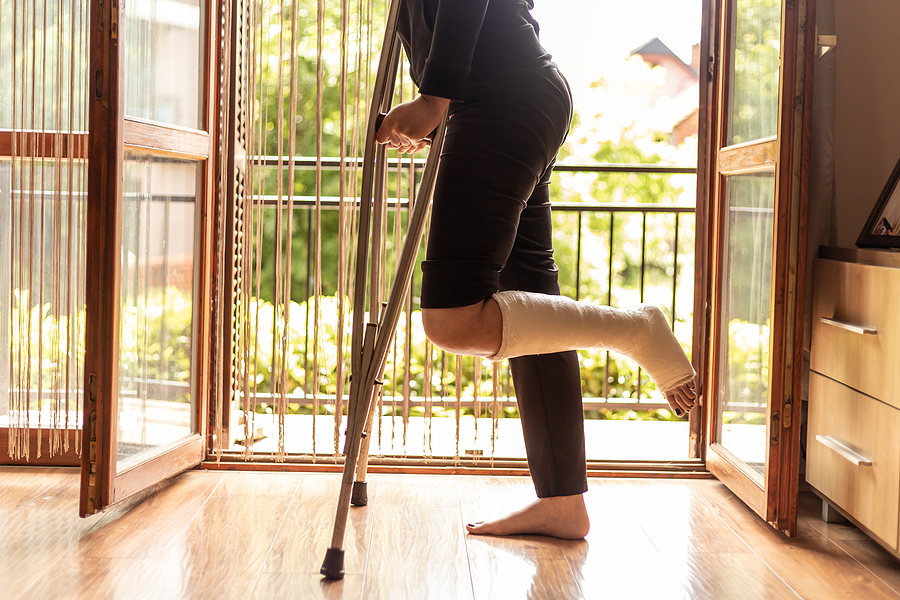 Bone fractures are a common injury that can affect people of all ages and backgrounds. Accidents, falls, sports, and diseases that cause bone weakening can all cause bone fractures. The symptoms of bone fractures vary and may include pain, swelling, bruising, and loss of function of the injured area. Different treatments are available depending on the type and severity of the fracture. While some fractures may heal with immobilization and rest, others require surgery to put the bones back into anatomical alignment for proper healing. To ensure optimal healing, it’s important to follow your doctor’s recommendations, which may include medications, diet and lifestyle changes, and Physical Therapy.
Bone fractures are a common injury that can affect people of all ages and backgrounds. Accidents, falls, sports, and diseases that cause bone weakening can all cause bone fractures. The symptoms of bone fractures vary and may include pain, swelling, bruising, and loss of function of the injured area. Different treatments are available depending on the type and severity of the fracture. While some fractures may heal with immobilization and rest, others require surgery to put the bones back into anatomical alignment for proper healing. To ensure optimal healing, it’s important to follow your doctor’s recommendations, which may include medications, diet and lifestyle changes, and Physical Therapy.
The Bone Healing Process
The healing process of a bone fracture involves 4 stages, including:
- Hematoma formation – the blood vessels in the broken bone tear and hemorrhage, resulting in a hematoma (abnormal pooling of blood) at the site of the fracture.
- Bone generation – capillaries grow into the hematoma, while phagocytic cells clear the dead cells away. Osteoblast and fibroblasts produce a fibrocartilaginous callus that connects the broken ends of the bone.
- Bony callus formation – the fibrocartilaginous callus converts to a bony callus that provide stability and strength to the site of the fracture.
- Bone re-modeling – the bony callus gradually re-shapes and compact bone replaces it to restore the normal structure and function of the bone.
Healing Time of Bone Fractures
Depending on the extent of your injury and your response to treatment, fractures can take several weeks to months to heal. The healing process can be longer as we age combined with any other related factors, such as osteoporosis or diabetes. It’s important to remember that pain usually subsides before your fracture is able to handle the stress of your daily activities. Therefore, even after your cast or brace is removed, and your pain has subsided, you may still have to modify your activities until your bone is completely healed.
Lifestyle and Diet Changes for Bone Fractures
Lifestyle and diet changes can have a significant impact on the healing of fractures by improving bone strength, preventing complications, and enhancing your recovery.
Eating a healthy diet that includes key nutrients for bone health, including calcium, vitamin D, protein, zinc, and omega-3 fatty acids helps to improve fracture healing. These nutrients can be found in lean meats, dairy products, nuts and seeds, whole grains, and a variety of fruits and veggies.
Lifestyle changes that you can make include:
- Quitting smoking
- Minimizing your alcohol consumption
- Managing your stress
- Engaging in regular physical activity
The Role of Physical Therapy in Healing Bone Fractures
If you’ve recently suffered a bone fracture and surgery, you may benefit from Physical Therapy, which involves an individualized treatment plan that is tailored specifically to your fracture type and severity. After suffering a bone fracture and surgery, it’s likely that you will lose some range of motion and muscle strength in the affected area. Your Physical Therapist can help you restore your normal range of motion, and strength to help you regain function of the affected area. You will work with your Physical Therapist to set goals and track your progress as you work through your treatment plan.
Undergoing a Physical Therapy assessment is one of the best ways to ensure proper healing after bone fracture and surgery. After the assessment, our Physical Therapist will create an individualized program that is specific to your needs and set you on the path towards optimal bone healing.
References
1. Sheen JR, Mabrouk A, Garla VV. Fracture healing overview - statpearls - NCBI bookshelf. April 2023.
2. Marsell R, Einhorn TA. The biology of fracture healing. Injury. 2011;42(6):551-555. doi:10.1016/j.injury.2011.03.031
3. Fractures (broken bones) – Ortho Info – American Academy of Orthopaedic Surgeons. OrthoInfo. August 2021.
4. Karpouzos A, Diamantis E, Farmaki P, Savvanis S, Troupis T. Nutritional aspects of bone health and fracture healing. J Osteoporos. 2017;2017:4218472. doi:10.1155/2017/4218472
5. Singh PK, Vankara A, O’Sullivan L, Aiyer AA. The role of diet and nutrition on fracture healing: A systematic review. Foot & Ankle Orthopaedics. 2022;7(4). doi:10.1177/2473011421S00942
